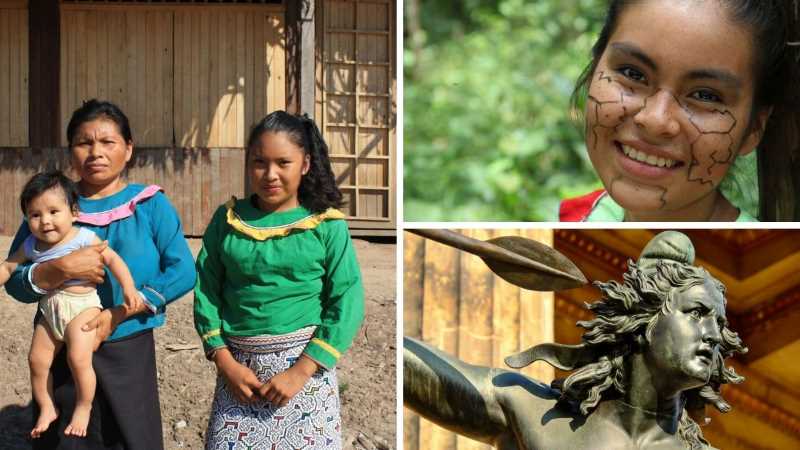
The women of the Amazon were first known to be fierce warriors. This was recorded at least by the first Spanish conquerors who related them directly to the Greek myth of the Amazons .
So strong was this impression on them that they ended up baptizing in this way the longest and widest river in the world, and by extension, the entire territory that surrounds it and its tributaries .
However, today their involvement in hunting and fishing activities, reserved for men, is not common, and they even have very strong cultural prohibitions or taboos that limit their participation in these areas.
Amazon women of flesh and blood
Currently, the women of the Amazon fulfill well-defined roles within the culture of the various tribes or indigenous communities that inhabit the Amazon River basin and its jungle . Participating in war is NOT one of these roles.

Among its activities are the care of the farm or orchards typical of indigenous agriculture , the preparation of typical dishes and typical drinks of the region, as well as the knowledge and management of medicinal plants , although the shaman has preponderance in this.
Origin of women according to Amazonian mythology
Just as in Judeo-Christian mythology it is said that women were created from a man’s rib, there are also myths and legends of the Amazon that try to explain the origin of women.
According to the myth of the Peruvian Amazonian indigenous people Kanpopiyapi or chayahuita, a God called Konpanama punishes men for the abuse of barbasco used for fishing and for attacking him at his warnings (Ochoa, 1992).
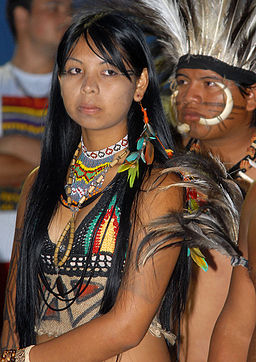
He then sends a deluge and the whole land is flooded except for a hill and a sapodilla tree where two men are mounted.
The hill and the tree grow magically as the waters rise, saving these two people and all the animals that climb on it.
During the entire time that the flood lasts, they survive by eating sapote and also thanks to the fact that God provides them with some magical sachapapas or jungle potatoes (Dioscorea trifida) that never end.
Finally the water level drops and they return to their normal life in the jungle, but they need women.
Every time they go hunting, some parrots transform into women, enter their homes and begin to spin cotton.
Whenever the men return, they have been turning into parrots again.
But one day one of them, piqued by curiosity, returns and finds the women spinning. When they become aware of their presence, they turn into parrots again and leave, never to return.
The God Konpanama then turns him into a woman. In one version of the myth a spider jumps on his penis transforming it into a vagina, in another version it is a piece of wet clay that falls on his genitals turning him into a woman.
The body of the Amazonian woman
As we have said, each indigenous culture of the Amazon has its own beliefs. Although sometimes they coincide, it is interesting to compare them and also find their differences.
This is how, among the Macuna of the Colombian Amazon, the body of women is made up in general lines of cassava and other tubers, chili peppers and fruits. For its part, the human body is composed mainly of coca, tobacco and yage.
But the Nukak, originally from the same Colombian Amazon region, have other beliefs. For them, the bodies of men and women are made equally of palm and fruit juices. However, this rule has an exception; only men can manipulate eoro, a pigment extracted by the shamans of this tribe. (Blonde, 2013)
Stages in the life of the women of the Amazon
Although there is not one culture of the Amazon but many, since we are talking about an enormous diversity of languages and ethnic groups, each one with its particular myths and rites, in general terms they all share common features, and so do their women.
Here is a brief review of the stages in the life of the women of the Amazon and their characteristic aspects as revealed by the anthropological and ethnographic studies carried out to date in the different regions of the Amazon basin.
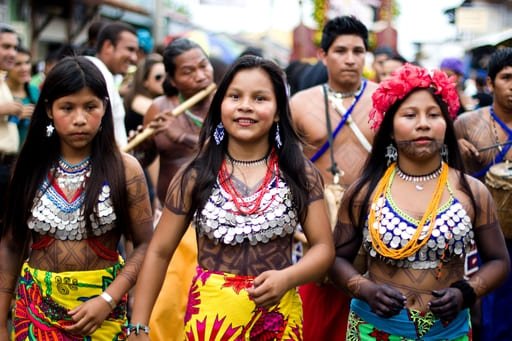
1. Childhood
The Guajibos of the Venezuelan Amazon celebrate the birth of females more than males. This is due to two reasons: on the one hand they will attract husbands to the family circle favoring alliances and on the other hand they will ensure offspring (Mosonyi, 1984).
Newborn babies must be worked on so that they are recognized as part of the tribe, or “true people”, this is done in various ways according to the ethnic group. Early social identification includes not only basic issues such as being breastfed, but contact with body adornments such as necklaces, bracelets, and charms. The newborns are the object of shamanic rituals without which they could die, be kidnapped or even be eaten by other external entities of the cosmos (Rubio, 2013).
In many cases girls are already promised or “reserved” to their future husbands from the moment of their birth.
Among the Guajibo indigenous people, it is common for children to observe their parents having sexual relations and then imitate them, as a game. Due to their permissive, slightly restrictive customs, children have an early playful sexual exploration that begins at 6 or 7 years of age (Mosonyi, 1984).
Childhood for most women in the Amazon has a well-defined biological limit, lasting until the first menstruation or menarche.
2. Menstruation, ritual of passage and isolation
Menarche occurs at 12 years of age on average, according to a study conducted in the state of Rondonia in the Brazilian Amazon , among women of the Suruí ethnic group (Valencia, 2010). This first menstruation marks the moment to carry out the ritual of feminine passage towards adulthood.
Another study carried out in the Peruvian Amazon (Riaño, 2004) among women of different ethnic groups (Letuama, Matapí, Yukuna and Tanimuka) from the Mirití River, compares this ritual with the Yuruparí, or male passage ritual.
In both cases, the person is isolated and put on a special diet. For the woman the ritual includes
“bath, vomit, healing with mountain salt, haircut and transmission of feminine knowledge to girls”
Riano, 2004
The Guajibos in Venezuela call this feminine passage ritual “Itoomo” and the procedure is very similar. They also confine the girls in a separate little house and put them under a strict fast.
In addition, they are prohibited from sleeping or shouting too much. During this time they are taught to weave, spin, sew and make pottery. At the end they take it to the river to wash it, test their skills with the cultivation and processing of yucca, paint it, dress it with necklaces and ornaments, and celebrate (Mosonyi, 1984).
After this ritual of passage, girls of 12 years old on average are ready for marriage and to experience their sexuality.
For the rest of their lives, every time they menstruate, Amazonian women must isolate themselves and respect specific restrictions according to their specific culture.
Menstruation continues to be a reason for isolation and food taboos among most Amazonian cultures. These cultural restrictions also apply to external visitors. Any woman who is a tourist or a researcher who lives among these communities will have to adhere to their norms (Riaño, 2004).
3. Sexuality and reproduction
Virginity is not something that indigenous people value, at least not among the Macuna and the Nukak, of the Colombian Amazon (Rubio, 2013). The common thing is that before marriage girls older than 12 years have already had sexual relations.
On average, women of the Suruí ethnic group (Brazil) become pregnant at the age of 14 and have 6 children, one every two years (Valencia, 2010).

Source: LHommeDuMonde / CC BY-SA
The woman without children is considered petty for the Macuna. The Nukak consider it a disease that can be cured by the shaman. When this happens, the shamans and their assistants become part of the child’s family, since without them he could not have been born (Rubio, 2013).
Although the chacra, chagra, place of cultivation or orchard, is a common place for sexual union, any place seems to be appropriate, such as hammocks, rivers, the jungle in general, especially for young couples. Older couples are more demure.
The burning charapa
In Peru, both on the coast and in the mountains, people often speak of the “burning charapa” to refer to the Amazonian woman. The term implies that the indigenous woman of the jungle is “hot” or “fiery” or that she has fewer sexual taboos or greater sexual desire than the average woman.
A study conducted by Collective Health Doctor Angélica Motta (IMS/UERJ Frankfurt, Germany) conducted a survey among women in the Amazon to find out what they thought about it.
The majority said that they were exactly the same as the rest of the women, flatly denying such stigmatization, especially in terms of its negative connotation of “easy” or “husband stealers”. The investigation shows that this fame is due to various factors such as:
- Due to the warm climate of the region, women wear fewer or very tight clothes.
- There is an ethnic phenotypic factor that makes them more attractive (thin waist, among others)
- Greater ease or fewer taboos, limitations or moral restrictions.
- Macho perspective of power that has its origins in the era of the rubber boom .
- Perspective of envy or jealousy of the women of Lima with respect to their men who went to the jungle during the height of the exploitation of rubber (See: Rubber barons ).
Friendship
Among women it is common to hug, comb their hair, brush their hair, paint their faces, talk about intimacies or “gossip”.
4. Marriage
Among the Napo-Quechua indigenous people of the Ecuadorian Amazon , marriage occurs in 4 well-defined stages:
- Maquipalabra: informal request from the groom’s parents to “reserve” the girl.
- Tapuna : formal commitment request.
- Pachtachina – an event to formalize the obligations of both parties.
- Bura: very expensive and elaborate wedding or union ritual.
Through Professor Blanca Moratorio of the University of British Columbia (Vancouver – Canada) and Associate Professor of Flacso in Ecuador, we know the story of Francisca (Moratorio, 2005).
It is about a rebellious girl who, after being married or sold by her parents, ran away three times from her husband’s house.
Francisca finally achieved the impossible, forcing her husband to go live with her at her parents’ house.
Apparently it is common for girls to run away from their husbands, although the case of Francisca and her persistence is somewhat exceptional.
Polygamy
According to the testimony of the Awajún or Aguaruna from the province of Condorcanqui in the Peruvian Amazon, “the man could have several wives, sometimes the fathers gave two or three daughters to a single man, because he could defend and support them. ” (Pintado and Meza, 2015).
Polygamy was not a universal right of all members of indigenous communities but a privilege of men who exercised power such as caciques, this feature is becoming less common due in part to the penetration of Western culture and religions .
Adultery
Amazonian indigenous societies are relatively tolerant of adultery. Although in the dominant machismo, men are tolerated more than women.
At least among the Nukak and the Macuna, lawsuits over these furtive encounters are not common, with some exceptions. Adultery is less serious when it occurs with people outside the tribe, and more serious if it occurs between siblings or close relatives due to their incestuous condition. Additionally, the tort will be greater when the married woman becomes pregnant by another man. In these cases, infanticide could be carried out before, but now it is more common for the man to simply abandon the woman, leaving her single (Rubio, 2013).
5. Roles, daily life
The social roles according to gender are also justified in a certain way by the religious beliefs of the Amazonian indigenous communities.
For example, in the case of the Aguaruna indigenous people of the province of Condorcanqui in Peru, the main deities or spirits clearly differentiate the spheres of action of men and women.
This is how the goddess of the earth, called Nugkui, is related to femininity, the God of the sun, called Etsa, is related to masculinity and the god of the river called Tsutki is related to the powers of the shaman, which among the Aguaruna in particular has no gender restrictions (Pintado and Meza, 2015)
Thus we see how women are intimately linked to the land, to the cultivation of the chacra, chagra or indigenous orchard. In many indigenous peoples they cannot intervene in hunting and fishing with their exceptions.
For example, among the Guajibos of the Venezuelan Amazon, women accompany men to hunt and fish where they demonstrate their skills. In the same way, although in many ethnic groups basketry is a thing only for men, among the Guajibos women are also involved. The art of pottery making is something purely female in most communities.
6. Childbirth
According to the beliefs of the Guajibos, there was in ancient times a bad man who helped give birth to women. This midwife had the custom of eating the placenta and viscera of women who gave birth, and sometimes even devoured the newborn itself. Although the women of that time knew the anthropophagous customs of this character, they resorted to him because they did not know how to give birth.
This ended with the appearance of Siipitoyoo, a female goddess who taught women to give birth standing up, squatting, holding on to a tree branch and on a bed of banana leaves. Guajiba women take pride in being able to give birth alone, without anyone’s help (Mosonyi, 1984).
7. Menopause
Someone once told me that the women of the Amazon were like Asian women who almost never went through menopause. Could not be farther from the truth.
It is true that Asian women experience menopause with much lower rates of symptoms, followed by European and North American women. But in that ranking , Latin American women are in a very bad position and among them indigenous women are worse off.
As if that were not enough, among indigenous women, Amazonian women seem to be in last place. Researchers debate whether this is due to a genetic, dietary, or even altitude factor.
The severity of menopausal symptoms is measured using the Menopause Rating Scale (MRS). It takes into account 3 groups of main factors:
1. Somatic-vegetative factors: such as hot flashes and sleep disorders, among others.
2. Psychological factors: such as mood, irritability among others.
3. Urogenital factors: urinary incontinence, vaginal dryness, among others.
The scale goes from 0 to 4, where 0 is absent and 4 is very severe. This means that the higher the score, the lower the quality of life of women.
Symptoms of menopause in Colombian indigenous women
In a study carried out in Colombia among indigenous women aged 40-59 years, from the Guajira peninsula (Wayuú), the indigenous reservation of San Andrés de Sotavento (Zenúes) and the Amazon (Ticuna, Uitoto, Ocaina), the degree of affectation of the symptoms of menopause through the aforementioned scale, yielding the following results (Monterrosa-Castro, 2012):
- The women of the Amazonian ethnic groups presented greater vaginal dryness and sexual problems.
- In the psychological domain, the Amazon women were worse off and in the somatic domain, the Amazon women and Zenú women alike.
- The number of women with severe deterioration of the urogenital dimension was higher in the Amazon (57.1%) followed by those from the Guajira (42.4%) and the Zenues (33.7%)
- In general, the Amazon women had a higher score on the scale, which translates, as we said, into a worse standard of living.
- There is a significant presence of women with menopause before 45 years of age in the indigenous populations studied, a situation that could be considered normal for them.
In Bolivian movima indigenous people, the age of menopause is even earlier, around 42 years on average, however, in indigenous people from other parts of the world, this age is around 50 years (14).
In Ecuador, menopause occurs between the ages of 35 and 47, according to data from the study Ecuadorian Epidemiology of premenopause, menopause, and climacteric.
The solution: self-care in premenopause
Although everything seems to indicate that the deterioration in the quality of life of the women of the Amazon responds in part to an ethnic or genetic factor, an adequate diet before menopause can help reduce or mitigate the symptoms of menopause. The recommended diet includes:
- Fruit
- Vegetables
- Cereals
- few meats
- Sufficient amounts of calcium (1000mg per day) and vitamin D for healthy bones. When calcium intake is less than this amount, the body takes calcium from the bones to maintain a proper balance, which leads to decalcification of the bones and osteoporosis. Some good sources of calcium in the Amazon are:
- Masato without alcohol
- Green leafy vegetables: broccoli, lettuce, guayusa
- Turnip
- brazil nut
- Fish such as: piranha or sardines
- Fruits such as: achiote , jobo , jocote , tópiro or cocona , borojó , pineapple , achira , achachairú , arazá , copoazú , lucuma , chitato or majaguito, asaí , pitahaya
Vitamin D; Essential for the absorption and utilization of calcium. Much of it is formed in the body by exposure of the skin to the sun; however, fish oils, butter, and liver are good sources.
- Foods low in saturated fat and cholesterol (reduce fat, especially of animal origin)
8. Shamans
A feature in favor of women in the stage of menopause is that when they stop menstruating, the rules that limit their actions due to bleeding are nullified, and therefore it is possible for them to take masculine substances such as yagé or ayahuasca and can be initiated into shamanistic practices. In a word: they can become shamans.
Bibliography
- Betancourt Rodríguez, CF, Alfonso, P., & Yaneth, M. (2011). Insights into the sociocultural context of HIV-AIDS in indigenous communities in Colombia. Contempt, (35), 75-86. ( PDF )
- de Jesús Monterrosa-Castro, Á., Paternina-Caicedo, Á., Márquez-Vega, J., & Romero-Pérez, I. (2012). Prevalence of urogenital symptoms in postmenopausal Colombian indigenous women. Iatreia, 25(4), 357-368. (PDF)
- Forero, M., & Yimara, T. (2010). Diverse sexual orientations in indigenous societies: a conceptual and state-of-the-art review on a little-known topic of Amazonian gender. Amazon Research Institute (IMANI). ( PDF )
- Gomez Cachay, L. (2018). Self-care practices carried out by women in the premenopausal period of the District of Trita, Luya, Amazonas-2017 (Doctoral dissertation, Universidad Nacional Toribio Rodríguez de Mendoza-UNTRM) (PDF)
- Gomez, M. (2010). On gender, myths and rituals: critical notes on gender studies in the Amazon. PUBLISH-In Anthropology and Social Sciences, (9). ( PDF )
- Mosonyi, E. E. (1984). Indigenous sexuality seen through two cultures: Waraos and Guajibos. Americanist Bulletin, (34), 179-191.
- Motta, A. (2011). The “burning charapa” and the hypersexualization of Amazonian women in Peru: perspectives of local women. Sexuality, Health and Society (Rio de Janeiro), (9), 29-60. ( PDF )
- Muratorium, B. (2000). Identities of indigenous women and politics of cultural reproduction in the Ecuadorian Amazon. INTRODUCTORY STUDY, 235. ( PDF )
- Muratorium, B. (2005). Life story of an Amazonian woman: intersection of autobiography, ethnography, and history. Icons-Review of Social Sciences, (22), 129-143. ( PDF )
- Nicita, G., Reigosa, A., Torres, J., Vázquez, C., Fernández, Y., Álvarez, M., … & Magris, M. (2010). Human papillomavirus (HPV) infection in an indigenous population of the Venezuelan Amazon. Salus, 14(1), 31-34.
- Child, C.B. (2012). What is that”? PROSTITUTION OF INDIGENOUS GIRLS IN THE NORTH-EAST AMAZON AND THE COLOMBIAN ORINOQUIA. Autochthonous, local power and global space facing the notion of citizenship (eBook), 17, 35. ( PDF )
- Ochoa Siguas, N. (1992). The myth of the flood and the creation of sexual division among the Kanpopiyapi of the Peruvian Amazon. Journal of the Society of Americanists, 78(2), 163-180. ( PDF )
- Riano, DR (2004). Reflecting on the notion of woman: A “white”, among Letuama, Matapí, Yukuna and Tanimuka women from the Mirití-Paraná Amazon River. Amazon Studies Bulletin. Postgraduate Unit of Social Sciences / Master’s Degree in Amazonian Studies, National University of San Marcos, Lima. (1): 73-80. (PDF)
- Rubio, D.M. (2013). Sexuality and affection between the Macuna and the Nükak, peoples of the Colombian Amazon. cadernos pagu, (41), 63-75. ( PDF )
- Valencia, MMA, Santos, RV, Coimbra Jr, CE, Oliveira, MV, & Escobar, AL (2010). Fertility aspects of Suruí indigenous women, Rondônia, Brazil: an approach. Brazilian Journal of Maternal and Child Health, 10(3), 349-358.

Daniel Osorio holds a BA in Social Communication with a mention in Communication for Humanistic Development (Universidad de Los Andes, 2005). Film and TV director and screenwriter. Specialist in Digital Marketing (SEO, SEM, Adwords, Adsense). General Manager (CEO) at DMT Agency. He is the founding editor of the portal delamazonas.com among others.
Related Posts
December 21, 2019
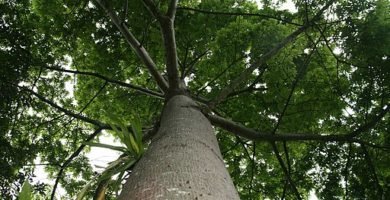
🥇 The Great Amazonian Legend
December 14, 2019

Amazonian myths and legends about ayahuasca
December 14, 2019
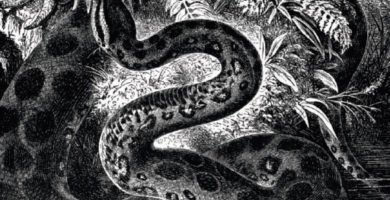
The anaconda in some Amazonian myths and the origin of the Universe
November 28, 2019
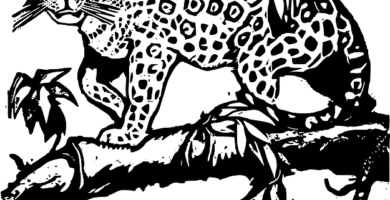
Amazonian Indigenous People Cosmovision – Beliefs, Taboos, Myths and Legends
November 27, 2019
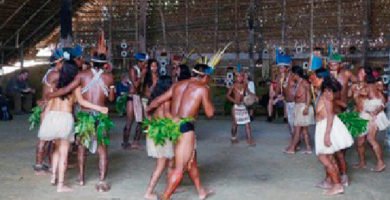
13 Typical dances of the Amazon (videos, music and movements)
November 25, 2019
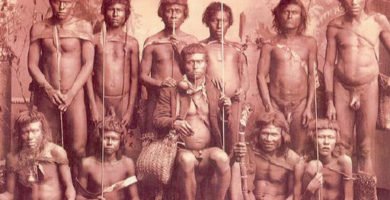
Amazonian Languages
October 5, 2019

All the Indigenous Peoples of the Amazon Rainforest
October 5, 2019

Myths of the Amazon Rainforest
October 5, 2019
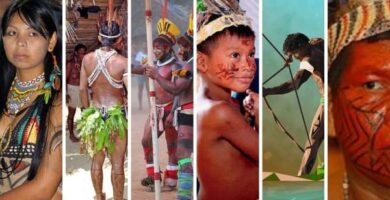
Amazon Rainforest Culture: Peoples, Cosmovision, Languages, Myths, and More
This post is also available in:
![]() Español (Spanish)
Español (Spanish)
